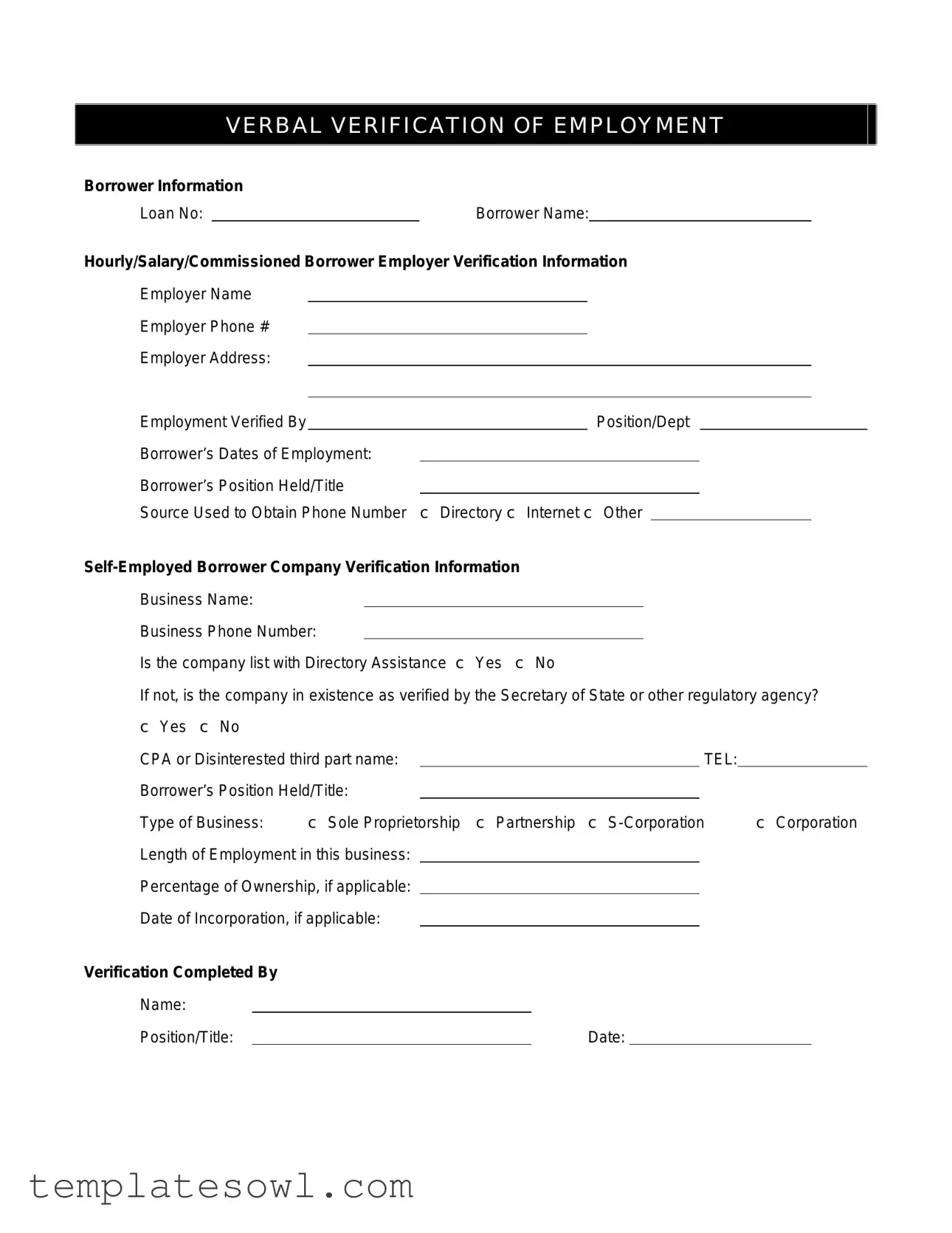What is the purpose of the Verbal Verification form?
The Verbal Verification form is used to confirm a borrower's employment and income details. This process helps lenders assess the borrower's financial stability and ability to repay the loan. It ensures that the information provided in loan applications is accurate and up-to-date.
Who should fill out this form?
This form is typically completed by the lender or their representative. They must contact the borrower’s current or past employers to verify employment and income details. If the borrower is self-employed, additional information about their business will be needed.
What information is required on the form?
The form requires the borrower’s personal details, including their name and loan number. It also asks for information about their employer, such as the name, contact number, and address. For self-employed individuals, details about the business, including its name, type, and ownership percentage, must be provided.
How is the employment verification conducted?
Verification is conducted by contacting the borrower's employer directly. This can be done over the phone or through other methods. The lender will ask about the borrower's dates of employment, position held, and any other relevant employment details. Documentation and records may also be checked for accuracy.
What if the borrower is self-employed?
If the borrower is self-employed, they will need to provide information about their business on the form. This includes the business name, type of business entity, and any relevant licenses or permits. Verification can come from third parties like accountants to confirm the legitimacy of the business.
What happens if the employment cannot be verified?
If the employment cannot be verified, it may raise concerns for the lender about the borrower's ability to repay the loan. The lender may request additional documentation or seek alternative ways to verify the borrower's income and employment status.
How long does the verification process take?
The verification process can vary in length depending on the employer’s responsiveness. Typically, it may take a few hours to a few days. Factors like the availability of the employer or the accuracy of the contact details can influence the duration.
What should a borrower do if their employer is unresponsive?
If an employer is unresponsive, the borrower should consider providing additional contact details, such as a secondary person who can confirm employment. The borrower may also need to supply supporting documents like pay stubs, tax returns, or a letter from the employer.
Is the information on the Verbal Verification form confidential?
Yes, the information collected through the Verbal Verification form is treated with confidentiality. Lenders are obligated to comply with data protection regulations and will typically use this information solely for the purpose of evaluating the loan application.
Who completes the verification section of the form?
The verification section is usually completed by the lender or the representative conducting the verification. This includes details about who verified the employment, their position, and the date of completion. Accurate reporting is crucial for the integrity of the verification process.

